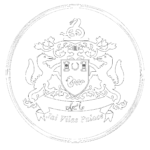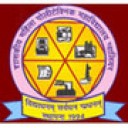Search
CTRL+K
Search
CTRL+K

About Gujri Mahal Archeological Museum
Gujari Mahal Museum is located on the eastern gate of the Gwalior Fort near Badalgarh doorway. It is about 4 km from railway station and bus stand. Taxi, auto and tempo are available to reach Gujari Mahal from the railway or bus station.
Gujari Mahal Museum is one of the important museum under the Directorate of Archaeology, Archives and Museums, Madhya Pradesh. In the year 1913, the then Maharaja of Gwalior State Shri Madhav Rao Scindia formed an Archaeological Department and appointed Shri M.B. Garde as Director of it . The decision to establish a museum in Gwalior was taken in 1914. Subsequently, ancient objects were collected from various places of the Gwalior state from 1914-20. In the year 1922 the museum was inaugurated. Since its inception the museum has gone through various stages of development. Many new galleries have also been introduced.
Gujari Mahal: Gujari Mahal, itself is one of the remarkable place for tourists. This is second important palace of Gwalior fort from the art & architectural point of view. The palace was built by king Man Singh for his beloved queen Mrignayani who was born in Gujjar family. The king called her Mrignayani due to her beautiful eyes as that of deer.
The archaeological heritage displayed in the museum is comprised of stone sculptures, terracotta figures, stone inscriptions, copper plate inscriptions, coins, bronze sculptures, paintings, arms & weapons and excavated material.
Housing the Sunga, Gupta, Pratihara, Kachchhapaghata and Parmara sculptures this is an ideal museum for study point of view. The important sculptures are of Yaksha Mani Bhadra(1st c. AD), Mahisaura mardini (6th c. AD), Panel depicting dance & music(Gupta period 5th c. AD), Naga Raja(5th c. AD) and Vaikuntha rupa of Vishnu and incarnations of Vishnu ( 10th c. AD). Shalbhanjika from Gyaraspur is noteworth. Besides, lion head & Tadapatra from Vidisha, remnants of railing are other remarkable objects of this museum.

There is a good collection of terracotta in the museum figurines datable to 3rd-4th c. AD found from Pawaya. Among these the figures of Rama-Sita, horse of Aswamedha Yagya, Buddha, Lady and human head are remarkable. A kind of rhythm in the well perportionate body and very well executed hair style are uniqueness of these terracotta figures.
The museum displays a rare collection of 70 stone & copper plate inscriptions. These are engraved in Brahmi, Devnagri and Persian scripts, which provide information of historical importance.
Museum has good collection of gold, silver; copper are alloy coins which are belonging from 300 BC to 20th c. AD. The important coins are punch marked (Ahat) coins, Gupta coins, Naga coins, Muslim Coins and Scindhia coins.

Five faces (panchamukhi) Ganesha, Siva as Tandava dance, Seshasayee Vishnu, Buddha with Dharmachakrapavartana, Mahisasuramardini figures are representing Bronze images in the museum.
The replicas of mural paintings of Bagh caves are displaed in the museum which have been prepared by many artists including Nanda Lal Bose, Bhand, Apte, Ahamad, etc. Apart from these, miniature paintings have also been displayed here which belong to Mughal , Rajputas, Kangra, Pahari and Gwalior styles. Among these, a figure of Changez Khan deserves special mention.
Various kinds of cannons, guns and swords are housed in the museum.
The excavated material displayed in the museum has been collected from Mohen-jo-daro, Vidisha, Ujjain, Maheshwara-Navdatoli, Awara, Pawaya, Indragarh ,etc. The material including pottery, terracotta objects, beads, ear ornaments and some of the ingraved terracotta seals also displayed in this museum.
Gallery No 1: This is a room for Museum curator in which the world famous Shalbhanjika is displayed.
This gallery is displayed with Makara (crocodile), Garuda & Lion head pillar collected from the excavations at Udaigiri & Besnagar (Vidisha) datable to 2nd c. BC. There are a Surya figure from Pawaya and sculptures datable to 5th c. AD in the museum. A pillar capital bearing four seated lions back to back on abacus and another one having single seated lion are the remarkable specimens of this museum. The Sun image of pawaya is unique and rare, carved on both side.
Gallery No 3:This gallery is housing with punch-marked coins, Indo-Sythiyan coins, Naga-coins, Gadhaiya coins, coins of Delhi Sultanate, Mughal coins, Malwa coins, Bundella coins of Orchhha, bronze images of Siva and his various forms, Vishnu, Dattatreya, Bodhisattvas etc. The replicas of Bagh paintings represent Bodhisattvas, processions, musical event, Naikas, Gandharvas, etc. These replicas have been prepared by Shri Nand Lal Bose, Bhand, Apte and Ahamad.

Gallery No 4:This is a special sculptural gallery where in the sculptures of Pratihara, Parmara and Kachchhapaghata styles are displayed. These sculptures are associated with Saiva & Vaishnava cults. Among the Shaiva sculptures Skanda-Kartikeya from Kota, Siva from Udaipur, Veenadhari Siva from Sihoniya, Uma-Maheshwar from Vidisha are important. The sculptures of Vamana, Sesashayee-Vishnu, and Hari-Hara from Ghaoi, are representing Vaishnava cult. Besides, Brahma, Parvati, Ganesha and Nandi all belong to Kachchhapaghata period are other outstanding sculptures of this gallery.
Gallery No 5:The upper part of Vedika displayed in this gallery is unique. It depicts Buddhist events on both sides. At one side, an elephant holding lotus indicating the birth of lord Buddha while Mahaparinirvana of Buddha is shown with stup in other side. In other scene, a Prince is riding on horse & a King riding on an elephant, carring relics of Goutam Buddha. A large image Manibhadra yaksha collected from pawaya also displayed here having engraved inscription of Kushan Shivnandin.
Gallery No 6:This gallery displayed with the sculptures of Gupta period which are Mahisasurmardini, Nrisimha, Vishnu, Saptamatrikas, Ek-mukhi linga and Jaina Tirthankara in Kayotsarga procured from Besnagar (Vidisha). There are the best instance of Gupta art having attractive hair style and strong body.
The space between gallery no 6 & 7 is occupied by a broken door lintel of 5thcentury found from Pawaya. It is depicted with the scene of dance & music at left side. Ladies are shown playing various musical instruments. A lady performing dance in the music is outstanding. The musical instruments are consisting of veena, flute, mridanga, dhapli,etc. At the right side a scene of Yagya is depicted in which king Bali is donating land to the Vamana incarnation of Vishnu, which transformed in to Trivikram form rising on tig leg above to seen the three foot land. A seen of churning sea and figure of Skand are shown another side.
This galley is housing the sculptures of Balrama & Trivikrama found from Pawaya (ancient Padmawati), Skanda & Ganga from Tumen ( ancient Tumbvana), Kubera from Terahi (ancient Teranbi), door-keepers from Mandsaur. These figures are datable to Gupta & late Gupta period. Kubera; the god of wealth holds a liqure pot ( surapatra) in right hand and money bag in the left hand.
This galley is housing the sculptures of Balrama & Trivikrama found from Pawaya (ancient Padmawati), Skanda & Ganga from Tumen ( ancient Tumbvana), Kubera from Terahi (ancient Teranbi), door-keepers from Mandsaur. These figures are datable to Gupta & late Gupta period. Kubera; the god of wealth holds a liqure pot ( surapatra) in right hand and money bag in the left hand.
This gallery has the sculptures of Vishnu’s incarnations such as Varaha, Nrisimha, Vamana, Rama, Balrama, Sarvatobhadrika, Kubera , Astadikpalas all found from Badoh ( Vidisha), Mahisasuramardini from Terahi, Mother –child from Sihonia. Yagya Varaha sculpture is quite large. Sarvatobhadrika bearing Vishnu over Garuda, Trivikrama, Nrisimha & Varaha is important among all. Besides, Kalyan-Sundar deserves special mention.
This gallery is displayed with miniature paintings. The paintings belong to Rajput, Mughal, Kangra, Pahari and Gwalior styles. The subject matter of these paintings are the figures of Changezkhan, Babar, Humayun, Jahangir, Shahjahan, Aurengzeb, Birbal, Nurjahan, Mumtaz mahal, Court of Raja Mansingh & hunting scene, Hameerdev, Rani Lakshmi Bai, Scindhia kings, ect. These paintings are very important for the comparative study.
The terracotta figurines found from Pawaya (Padmawati) are housed in this gallery. This archaeological site is located at a distance of about 20 km from Dabra the Tahsil of Gwalior District at the confluence of Parvati & Sindh rivers. The site was excavated by Shri Garde in 1924-25, 1933-34 and 1941.The excavated terracotta figurines have been collected in Gujari Mahal Museum. The selected terracotta figurines are displayed in this gallery. The important figurines are Ram-Sita, female figures, etc. The beautiful hair styles of lady figures are remarkable. The moulded figurines have rounded face with open eyes. they represent the Naga and Gupta art styles.
The sculptures of Jain Tirthankaras like Aadinatha, Padmprabha, Parshwanatha, Neminatha, Dharmanatha and Chandraprabhu procured from Gwalior, Vidisha and padawali are displayed in this gallery. These sculptures are in dhyana or kayotsarga posture. Some of the sculptures bear inscriptions. These are datable to 11th-12th & 15th – 16th c. AD.
This gallery contains Vaishnava sculptures. Among these; standing Vishnu, Sesashayee Vishnu, Balarama, Kurma Avatara, found from Gwalior, Nri-Varaha, Nrisimha, and Ram-Sita from Sihonia, Vamana from Chanderi & Narwar, Yoga Narayana Vishnu & Vishnu riding on Garuda found from Sonari are noteworthy sculptures. These sculptures are datable to 9th-12th c. AD. In standing figures of Vishnu, the Parikara ( panel-frame) is depicted with Dashavataras of Vishnu too.
This gallery is containing the sculptures of Matrika ( Yogini) from Naresar, Gajasuravadha & Parwati from Gyaraspur, Uma-Maheshwar from Vidisha. The pedastal of Matrikas are bearing the name of the Matrika. The most remarkable sculpture of this gallery is Gajasuravadha in which lord Shiva is four handed. The displayed sculptures in this gallery are datable to 11th-12th c. AD.
The sculptures of Ganesha, Kartikeya procured from Padhawali, sihoniya are displayed in the gallery which including a unique idol of four handed found from Gwaliar are Ganesh The sculptures are datable to 9th-10th c. AD.
This gallery is displayed with the sculptures of Agni, Surya , Brahmani, Saraswati, from Sihoniya, four faced Siva and Surya (seated) from Padhawali. Agni figure found from Sihonia is a matter of debate among the scholars in terms of its identification. Normally, Agni is attributed with jata-mukutandbeard. But, this figure is adorned with karanda-mukuta and without beard. It holds gada and padma in upper hands but kamandalu and his mount suggest the figure as Agni. Thus; this sculpture has been considered as Agni-Narayana. The Surya sculptures from Sihonia are sampada sthanaka while the sculptures from Padhawali are in sampada aasana. One of sculptures among four faced Siva is in aghora form in which lord Siva is consuming liqure (sura). The displayed sculptures in the gallery are datable to 11th-12th c. AD.
Both the galleries are devoted to 28 inscriptions ranging from 2nd c. BC to 17th c. AD. They are written in Prakrit and Sanskrit language while scripts are Brahmi, Devnagri, Arabic & Persian. The earlist inscription is a pillar inscription belongs to Maharaja Bhagawat found from Besnagsr datable to 2nd c. BC. In addition, inscription of Prabhakar one of the fuedals of Govindgupta dated to 467 A.D. found from Mandsaur, an inscription during the reign of Kumargupta reported from Tummain, Mandsaur Prasasti of Kumargupta-Bandhuvarman, inscription of Mihirbhoj from Sagartal Gwalior, inscription of Vikram Singh from Dubkund are important. Other inscription are of Narwar inscription of Asalladev, Lakhari inscription of Abhaydev, Pratihar Kakkuk of Gwaliar, Udaypur Prasasti of Udaygiri, Survaya inscription of Adhigdev etc.
It is positioned in the open courtyard of the palace where in goddess Saraswati, Ganesha have been displayed. Along with them, the pancha devas (Shiva, Vishnu, Surya, Ganesha, Mahismardini Durga) are also kept. In addition, Brahma, Vishnu, Mahesha, incarnations of lord Vishnu, Siva and his family have also been displayed in this gallery. Various Dikpalas, Jain Tirthankaras, Yaksha-Yakshi, Naikas, etc are displayed over here.
In the courtyard various beautiful pillars, architectural members, and sculptures are other important objects of the gallery. They may be assigned to Pratihara and Kachchhapghatperiod. Two monolithic miniature temple of Pratihar style are the attraction point of this court yard.
This gallery is formed in the basement below the ground floor of the palace where in Stone Age tools include hand axes, scrappers, etc are displayed carefully. The tool-techniques have been shown through the figures. Swords, shields, spears, maces, guns, pistols, cannons, etc are the other important objects in this gallery.
Gujari Mahal Museum is world famous for its rare collection of sculptures. Many sculptures of this museum have been displayed in Bharat Mahotsavas in abroad in various occasions. These sculptures are remarkable for their iconography and art. The full credit to these sculptures displayed in foreign countries for spreading the great Indian cultural legacy throughout the world. Some of such sculptures are illustrated as under:

This dazzling sculpture procured from Gyaraspur of Vidisha distrcit is an identity of Gujari Mahal Museum. Unfortunately, it is mutilated from arms and legs. The beautifull smile on face, hair style, ornaments and drapery of this idol is remarkable and beyond comparison of the beauty of a lady. It is datable to 10th c. AD and it has been displayed in the exhibitions in France and Britain.
The image of Gajasuravadha was collected from Gyaraspur in which lord Shiva is shown slaying Gajasura. Shiva is four armed and wearing a long mundamala. The upper part of the sculpture is broken. Goddess Chamunda near the feet is in dancing pose. This sculpture is datable to 10th c. AD.
This sculpture was found from Udaipur and datable to 10th c. AD. Siva is carved in a chaitya arch (gawaksha) beautifully in dancing pose. This is a part of sukanasika of the temple. This specimen has been displayed in Senfransisko exhibition.
Categories & Amenities
Review stats
Excellent0%
Very good0%
Good0%
Fair0%
Poor0%
Reviews




No results available
Reset© Gwalior Plus. All rights reserved.